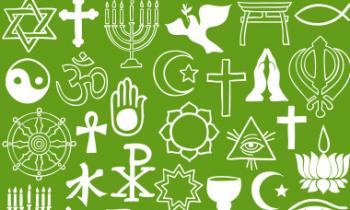This is the VOA Special English Education Report.
Public schools in the United States have to be neutral about religion, even though they close for holidays like Christmas. The Constitution separates religion from government. Researcher Charles Haynes explains what it says.
CHARLES HAYNES: “‘Congress shall make no law respecting an establishment of religion, or prohibiting the free exercise thereof … ‘ Those sixteen words provide the framework for how we deal with religion in our public schools.”
Those words are part of the First Amendment, which guarantees freedom of expression and other rights. Charles Haynes is a senior scholar at the First Amendment Center, a group that studies free expression issues.
In the last generation or so, different groups have encouraged public schools to celebrate diversity and cultural differences. At the same time, courts have ruled against any publicly supported celebrations of one religion over another.
Charles Haynes thinks the schools are generally doing a good job.
CHARLES HAYNES: “So public schools now I think understand that their role is to expose students to learning about different religions in a fair way, an objective way. Their role is to protect the religious liberty rights of students; if they want to express their faith, they may do so. But school officials under the First Amendment may not take sides in religion.”
Hollie Jones teaches six year olds at a public school in Loudon County, Virginia. Each December, she has her students make posters about their own celebrations at home and present them to the class. The posters are discussed and then shown on the walls at the school. And what celebrations have been represented?
HOLLIE JONES: “Four years looking back, we’ve had some students will do Hanukkah, some Kwanzaa, some Christmas. Some we’ve had in the past do the Chinese New Year. This year I had a student whose father was from Iceland, and he did the Icelandic Elf School, and talked about all the different elves that are represented and their names and their meanings.”
Some children come from families with more than one religion.
HOLLIE JONES: ” I have had many students who come from a blended culture family who perhaps the mother celebrated Hanukkah and the father celebrated a different holiday, and so they really do both within their home.”
Hollie Jones says the children always ask lots of questions about the traditions of other families.
HOLLIE JONES: “And it’s really interesting because for many children, especially in first grade, they are very unaware that these different things go on in other homes. So it’s not necessarily imposing other religions on them, but just kind of creating a sense of awareness in celebration of how different and diverse just within our classroom we are.”
And Charles Haynes says that is one of the purposes of public education in America.
And that’s the VOA Special English Education Report, written by Nancy Steinbach. You can find transcripts and podcasts of our reports, and you can post comments, at WWW.VOA-STORY.COM. And you can find us on Twitter and YouTube at VOA Learning English. I’m Steve Ember.
